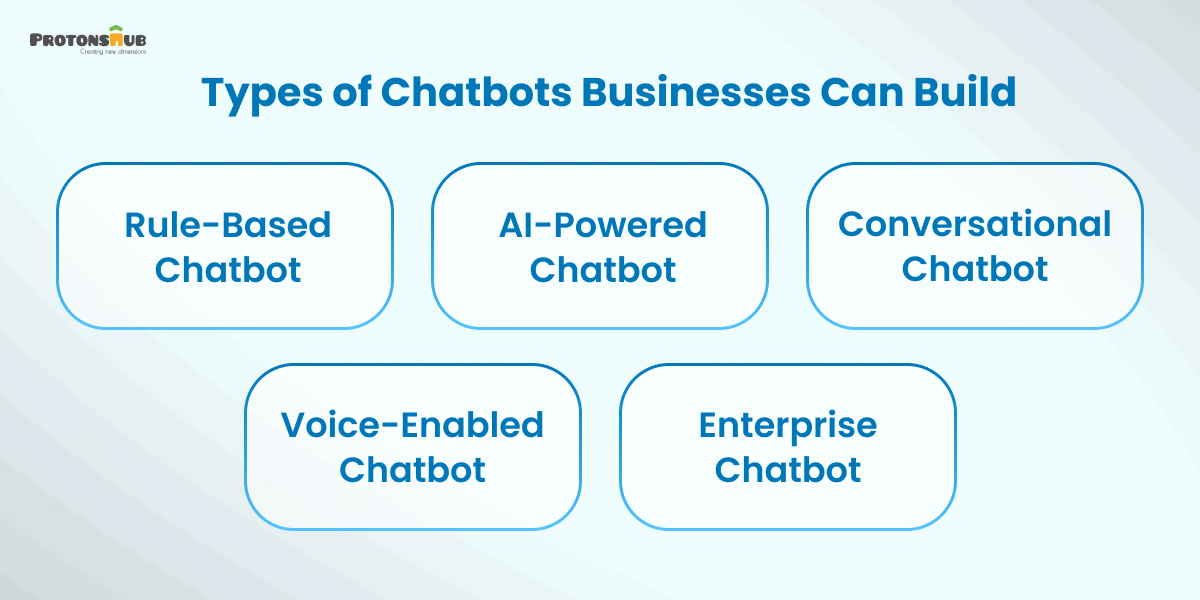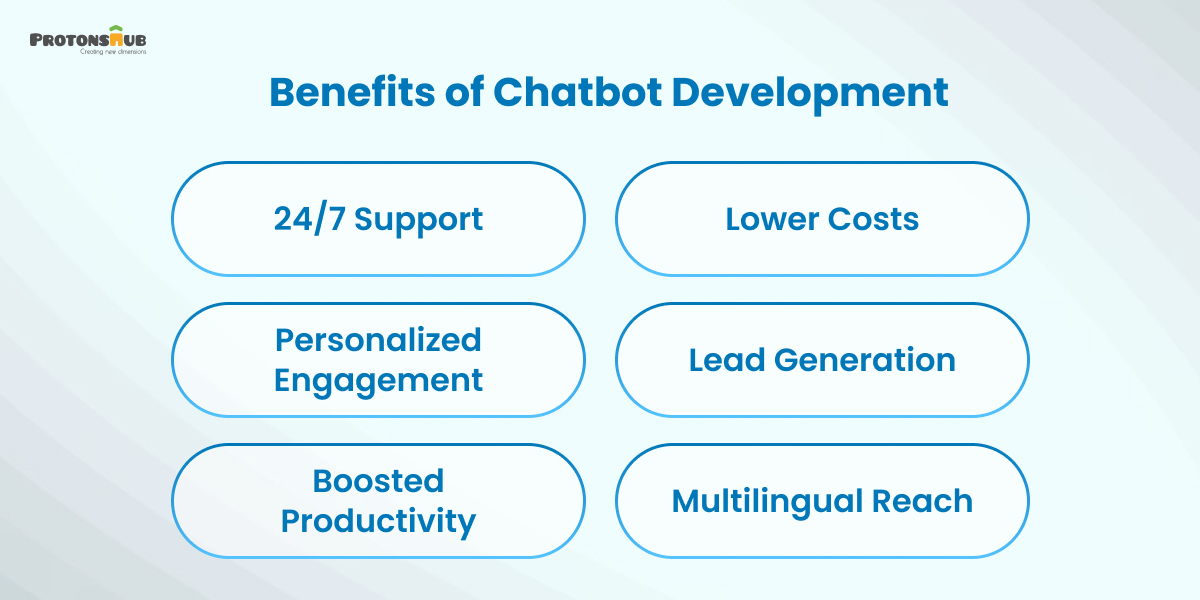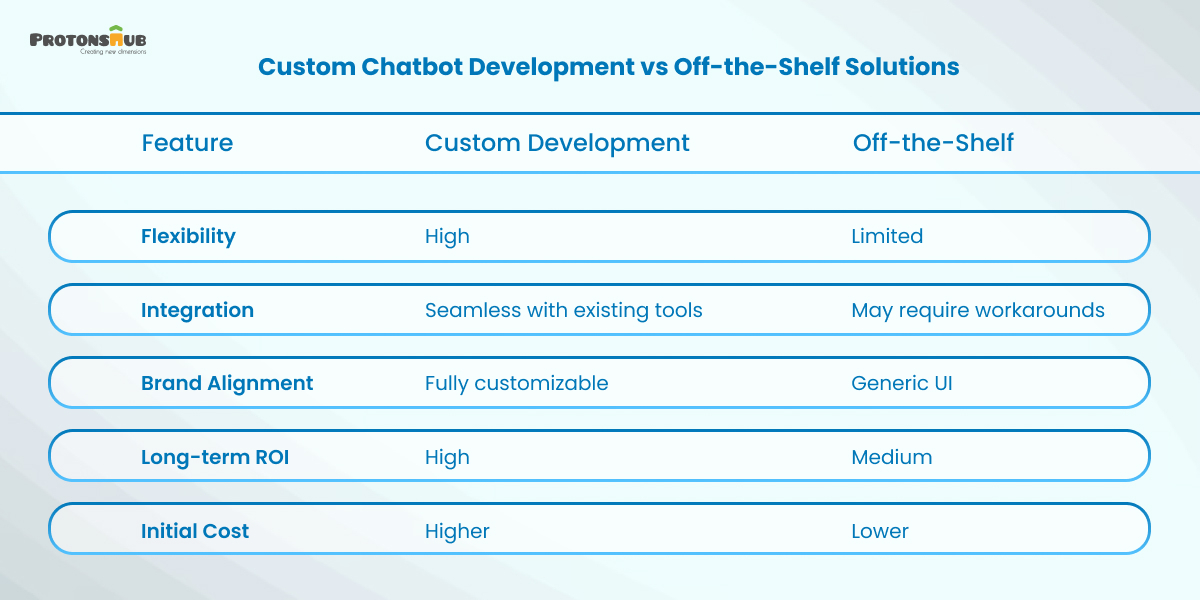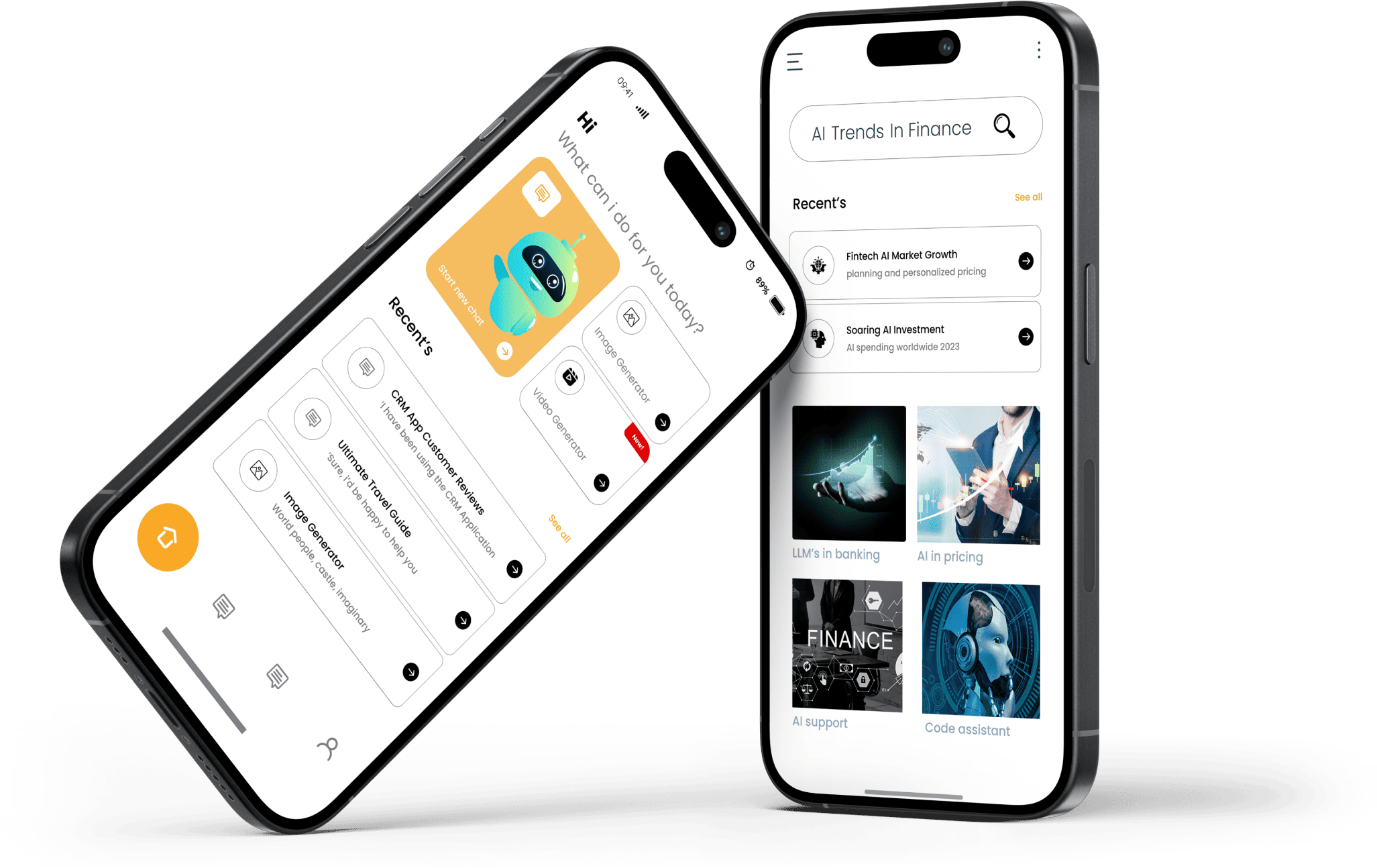In todayâs digital-first landscape, businesses are under constant pressure to deliver real-time, seamless customer experiencesâaround the clock. One of the most effective technologies enabling this shift is the chatbot.
Driven by advancements in artificial intelligence, machine learning, and natural language processing, chatbots have evolved beyond basic responders into intelligent, scalable tools for business automation. As a result, chatbot development services are no longer optionalâthey have become a strategic investment for enterprises looking to streamline operations, improve customer engagement, and enhance service delivery.
From startups to large enterprises, organizations are now leveraging chatbots to support a wide range of functions, including customer service, sales enablement, employee onboarding, and internal support. When implemented strategically, chatbots can improve response time, reduce operational costs, and deliver consistent experiences across multiple channels.
What Are Chatbot Development Services?
Chatbot development services refer to the end-to-end process of designing, building, and deploying intelligent chat interfaces tailored to specific business needs. These services include:
- Custom chatbot development tailored to your domain
- Integration with existing platforms (CRM, ERP, etc.)
- AI and NLP (Natural Language Processing) capabilities
- Multilingual and omnichannel deployment
- Analytics, security, and maintenance support
A reputable chatbot development company not only provides technical implementation but also strategic guidance to align the chatbot with your business goals.
Types of Chatbots Businesses Can Build
Selecting the right chatbot type is crucial for achieving business-specific outcomes. Here are the major types of chatbots businesses typically use, along with their unique strengths and ideal use cases. Letâs take a closer look at each chatbot type and understand where they deliver the most value:

1. Rule-Based Chatbots
Rule-based bots (also called decision-tree bots) work on a series of if/then statements and predetermined flows. Theyâre simple, cost-effective, and ideal for answering repetitive queries.
Best suited for:
- FAQ support
- Lead capture forms
- Appointment scheduling
- Website navigation
Pros:
- Easy to develop and deploy
- High accuracy for limited scenarios
- Cost-effective
Cons:
- Cannot handle complex or ambiguous queries
- No learning capability
2. AI-Powered Chatbots
AI-based bots use Natural Language Processing (NLP) and Machine Learning (ML) to understand context and user intent. These bots learn and improve with every interaction.
Best suited for:
- Complex customer support
- Financial services
- Healthcare queries
- Intelligent sales assistance
Pros:
- Scalable and self-learning
- Handles diverse and complex inputs
- Delivers human-like interaction
Cons:
- Higher development cost
- Requires training data and ongoing tuning
3. Conversational Chatbots
Conversational chatbot development focuses on building bots that simulate real human conversation. These bots retain context, detect sentiment, and deliver smooth responses.
Best suited for:
- 24/7 customer engagement
- Virtual assistants
- User onboarding
- Guided product discovery
Pros:
- Engaging user experience
- Supports multi-turn conversations
- Increases user retention
Cons:
- Requires advanced NLP models
- Longer development cycles
4. Voice-Enabled Chatbots
These bots respond to voice commands instead of text. Integrated with voice recognition systems like Google Assistant, Alexa, or custom IVR systems.
Best suited for:
- Smart devices
- Automotive assistants
- Banking & insurance hotlines
- Logistics tracking via phone
Pros:
- Hands-free interactions
- Ideal for on-the-go use
- Supports accessibility
Cons:
- Complex voice processing
- Accents and dialects may impact accuracy
5. Enterprise Chatbots
Enterprise chatbot development is aimed at streamlining internal operations. These bots integrate with internal systems like HRMS, ITSM, and CRM.
Beest suited for:
- HR automation
- IT helpdesk ticketing
- Employee onboarding
- Sales team support
Pros:
- Reduces operational load
- Increases employee productivity
- Provides fast internal support
Cons:
- Custom integration may be required
- Needs cross-departmental collaboration
Benefits of Chatbot Development
Understanding the benefits of chatbot development helps businesses justify the investment and align chatbot use cases with ROI expectations.

1. 24/7 Customer Support
Chatbots never sleep. They are available 24/7/365, reducing the need for live agents and ensuring round-the-clock engagementâeven on holidays.
Impact:
- Reduced wait time
- Increased customer satisfaction
- Enhanced brand reputation
2. Operational Cost Savings
Automating repetitive customer and internal interactions means fewer support agents, lower payroll costs, and reduced human error.
Use case example:
A chatbot can simultaneously handle thousands of FAQs, replacing 10â15 support agents.
3. Lead Generation and Qualification
Sales bots proactively initiate conversations, ask qualifying questions, and push leads to CRM systems. This shortens the sales cycle.
Features:
- Real-time interaction
- Calendar booking integration
- CRM sync
4. Personalization at Scale
AI-driven chatbots track user preferences, purchase history, and behavior to tailor recommendations or responses.
Result:
- Higher conversion rates
- Improved customer loyalty
- Increased average order value
5. Employee Productivity Boost
Chatbots streamline internal workflows like time-off requests, IT issue resolution, or employee FAQsâsaving hours of manual work weekly.
Examples:
- HR chatbot handling payroll queries
- IT bot assisting with system login issues
6. Multilingual & Global Accessibility
Serve global users by building chatbots that communicate in multiple languages and understand local nuances.
Outcome:
- Market expansion
- Improved customer inclusivity
- Reduced reliance on global support staff
7. Real-time Data Collection & Feedback
Bots collect user feedback instantly and continuously, providing valuable insights into user sentiment and preferences.
Business value:
- Improve product offerings
- Adjust marketing strategies
- Monitor support performance
Key Features of Modern Chatbot Solutions
A well-architected chatbot should go beyond basic query handling. Letâs explore the essential features that modern chatbot development services must offer.

1. Natural Language Processing (NLP)
NLP allows the bot to parse human language accurately, detect intent, and respond naturally. This is the backbone of conversational chatbot development.
Examples:
- Recognizing different ways to ask the same question
- Sentiment analysis and emotion detection
2. AI & Machine Learning
ML allows the chatbot to improve over time by learning from user interactions, mistakes, and successful outcomes.
Benefits:
- Personalized experiences
- Smart recommendations
- Enhanced problem-solving capabilities
3. Third-Party Integration
A chatbot must integrate seamlessly with:
- CRM (Salesforce, HubSpot)
- ERP (SAP, Oracle)
- Ticketing tools (Zendesk, Freshdesk)
- eCommerce platforms (Shopify, Magento)
- Communication channels (Slack, WhatsApp)
4. Multichannel and Omnichannel Support
Support for:
- Web
- Mobile apps
- Facebook Messenger
- Instagram DMs
- Voice (IVR, Alexa, Google Assistant)
Benefit:
- Customers can interact on their chosen channels while maintaining a consistent conversation flow.
5. Security & Compliance
For industries like healthcare or finance, bots must comply with data privacy and security standards such as:
- GDPR
- HIPAA
- PCI-DSS
Features include:
- End-to-end encryption
- Role-based access control
- Secure APIs
6. Rich Media & UI Capabilities
Modern chatbots support more than just text. They can deliver:
- Image carousels
- Videos
- Buttons and quick replies
- Dynamic forms
Outcome:
- Increased engagement and improved user experience.
7. Analytics & Performance Reporting
Real-time analytics helps track:
- Bot accuracy and response time
- Abandonment rates
- Top queries and intents
- User satisfaction (CSAT)
Goal:
Continuously optimize bot performance and user satisfaction.
Chatbot Use Cases Across Industries
Letâs look at how different sectors are benefiting from chatbot development:

1. E-commerce
In the competitive world of e-commerce, chatbots have become vital in improving customer experiences and increasing sales conversions. They help brands stay available 24/7, offer personalized product suggestions, and resolve common queries instantly.
Key chatbot use cases in e-commerce include:
- Cart recovery: Chatbots can re-engage users who abandon their shopping carts by sending timely reminders, discount offers, or resolving hesitations via automated assistance.
- Order tracking: Customers can quickly check the status of their orders through a simple chat message, reducing pressure on support teams.
- Product recommendations: AI-driven bots analyze browsing behavior and past purchases to suggest relevant products, increasing upsell and cross-sell opportunities.
- Handling FAQs: Whether itâs about delivery timelines, return policies, or payment options, bots can instantly provide accurate information.
- Returns and refunds: Bots can guide users through the return process, collect necessary details, and generate return shipping labels, creating a smoother post-purchase experience.
2. Healthcare
Healthcare providers are adopting chatbots to improve patient engagement, reduce wait times, and deliver accessible careâespecially in a post-pandemic world where virtual services are in high demand.
Healthcare chatbot use cases include:
- Appointment booking: Patients can schedule, reschedule, or cancel appointments without needing to call the clinic, saving time for both parties.
- Patient triage: Bots can ask preliminary health questions and guide patients to the right care pathway, reducing unnecessary visits and improving triage accuracy.
- Medication reminders: Chatbots help patients stay compliant with treatment schedules by sending automated medication reminders, dosage details, and refill alerts.
- Mental health support: Conversational bots trained for emotional wellness offer a confidential space for users to talk, assess their mood, and suggest next steps or connect them to professionals.
- Health record access: Integrated chatbots can retrieve a patientâs health summary, lab results, or insurance details securely on request.
[Also Read: Top 10 Use Cases of AI-Powered Chatbots in Healthcare]
3. Banking & Finance
In a highly regulated and service-oriented industry like finance, chatbots are transforming how institutions interact with customers by providing secure, efficient, and personalized services.
Common chatbot applications in banking and finance:
- Transaction queries: Users can inquire about their latest transactions, account balances, and spending summaries instantly via chat.
- Fraud alerts: Bots can notify users of suspicious activity, request verification, or block a card based on predefined triggers.
- Virtual financial assistants: These bots offer budgeting tips, track expenses, suggest investment opportunities, or guide users through loan application processes.
- Loan prequalification: Chatbots can determine loan eligibility by collecting basic information and prequalifying users before forwarding them to a financial advisor.
- Customer onboarding: New account setup can be facilitated through bots by verifying identity, collecting documents, and walking users through the process.
4. Education
Educational institutions and e-learning platforms are turning to chatbot solutions to streamline administrative processes, enhance student support, and deliver learning resources more effectively.
Education chatbot use cases include:
- Student onboarding: Bots help new students navigate enrollment, class selection, tuition payment, and campus orientation, easing the transition into academic life.
- Course assistance: Learners can ask bots questions related to coursework, deadlines, schedules, or grading policies, ensuring round-the-clock academic support.
- Virtual tutoring: AI bots can assist in explaining complex subjects, sharing reference materials, and conducting quizzes to reinforce learning.
- Exam reminders: Students receive personalized reminders for upcoming exams, assignment deadlines, and study sessions.
- Admissions inquiries: Chatbots handle queries related to application status, entrance exams, scholarships, and document submission.
5. Logistics
In logistics and supply chain management, real-time communication and visibility are critical. Chatbots help automate communication, reduce delays, and enhance transparency across the delivery network.
Logistics chatbot use cases include:
- Delivery tracking: Customers and partners can instantly track the location of parcels, expected delivery times, and any shipping exceptions.
- Warehouse automation: Bots assist warehouse managers in stock checks, order fulfillment updates, and staff coordination.
- Fleet management: Drivers and fleet coordinators use chatbots for route updates, fuel logs, maintenance schedules, and emergency alerts.
- Order management: Clients can place, modify, or cancel shipments through a conversational interface that syncs with backend systems.
- Customer support: B2B and B2C logistics companies deploy chatbots to answer rate inquiries, customs procedures, and ETA queries.
6. HR and Internal Operations
Chatbots are enhancing internal efficiency by automating repetitive queries, streamlining HR processes, and serving as a digital assistant to employees across departments.
Use cases in HR and internal operations:
- Employee onboarding: Chatbots can guide new hires through policies, benefits, tools, and initial tasks with a personalized approach.
- Leave application & approvals: Employees can check their leave balances and apply for time off using a bot, which can also notify managers for approval.
- IT support: Chatbots can resolve common IT issues like password resets, software access, or connectivity problems by guiding users step-by-step or raising tickets.
- Internal FAQs: From remote work policies to reimbursement guidelines, bots can serve as a self-service knowledge base.
- Training assistance: Bots can recommend learning paths, register employees for courses, and send certification reminders.
Choosing the Right Chatbot: A Side-by-Side Comparison
When deciding between a custom chatbot and an off-the-shelf solution, itâs important to weigh their capabilities in relation to your business goals. While off-the-shelf platforms offer a quicker setup and lower initial investment, they often fall short in flexibility, integration, and brand personalization.
In contrast, custom chatbot development delivers tailored features, seamless backend connectivity, and enhanced user experiencesâmaking it ideal for businesses with complex needs.

Custom solutions are particularly well-suited for organizations aiming to automate large-scale interactions, integrate with existing workflows, or deliver brand-specific conversations. While the upfront cost may be higher, the long-term ROI and customer satisfaction benefits often outweigh the initial investmentâespecially for growing or enterprise-level businesses.
[Also Read: Chatbot vs. Live Support: Which Is Better for Your Business?]
The Future of Chatbot Development
As AI and language models continue to evolve, chatbots are becoming increasingly human-like and context-aware. The emergence of generative AI and large language models (LLMs) is pushing them beyond basic responses into truly interactive, dynamic conversations.
Businesses that adopt conversational chatbot development early will lead the way in customer satisfaction, brand loyalty, and operational efficiency.
How ÍűșìșÚÁÏ Can Help You
Chatbot development services have shifted from optional tech add-ons to strategic business enablers. Whether you need a simple support bot or an enterprise-grade solution, the right development partner can help you unlock efficiency, reduce costs, and enhance customer experience.
Looking to build a chatbot that aligns with your business goals? Partner with an expert chatbot development company like ÍűșìșÚÁÏ to get started.






























 Contact Us
Contact Us 
























.png)



.png)









.jpg)












.jpg)






.jpg)
.jpg)

.jpg)

.png)























.jpg)









.png)



































































































































